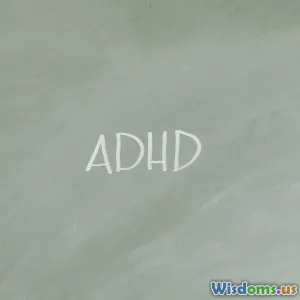
Why Do Adults Learn Languages Slower Than Kids Science Explains
8 min read Discover the neuroscience behind why adults learn languages slower than kids and how understanding this can transform your language learning journey. (0 Reviews)
Why Do Adults Learn Languages Slower Than Kids? Science Explains
Learning a new language is a journey filled with excitement and challenges—yet, many adults find themselves wading through linguistic hurdles much slower than children do. This phenomenon has sparked questions for decades: Why do adults struggle more? Is it a question of motivation, effort, or something deeper within our brains? The good news is science provides insightful answers. Understanding these can not only demystify the process but also empower adult language learners to optimize their strategies and succeed.
The Fascinating Differences in Brain Plasticity
What Is Brain Plasticity?
Brain plasticity, or neuroplasticity, is the brain's ability to reorganize itself by forming new neural connections throughout life. This capability is at its zenith during childhood, a critical factor in explaining why children acquire languages with ease.
Children’s brains are like linguistic sponges; they absorb sounds, grammar structures, and vocabulary naturally through immersion and social interaction. Neural pathways associated with language learning are incredibly flexible.
Decline of Plasticity with Age
As we grow older, plasticity decreases, making it harder to form new neural routes for unfamiliar languages. A landmark study published in Nature Neuroscience (2016) assessed brain plasticity via MRI scans and found that adult brains show reduced adaptability when processing new language sounds compared to children. This reduction means pronunciation and accent acquisition often come with more difficulty for adults.
Example: Adults tend to struggle with the subtle tonal variations in languages like Mandarin compared to children, whose brains adjust quickly to perceive and reproduce such differences.
Cognitive Differences: Memory and Learning Strategies
The Role of Working Memory
Working memory—the ability to hold and manipulate information during learning—is often stronger in adults, yet paradoxically, this advantage does not translate directly into faster language acquisition. Why?
Adults tend to rely heavily on explicit learning methods, such as memorization and grammar rules, engaging their working memory to analyze language rather than absorb it naturally.
Implicit vs. Explicit Learning
Children primarily use implicit learning, picking up rules wireless through exposure without conscious effort. Adults lean toward explicit learning, consciously studying rules and vocabulary. Cognitive scientists like Pennycook (2017) argue that while explicit knowledge helps performance, it often slows down the internalization process that makes a language second nature.
Example: Grammar Learning
Adult learners frequently focus on sentence structure and verb conjugations. This analytic focus can limit fluid conversations because it demands constant cognitive attention, unlike children who intuitively grasp grammar from context and repeated exposure.
Social and Environmental Factors
Learning Context Matters
Children typically acquire languages in immersive, supportive environments—think homes, schools, or communities where interaction is constant and mistakes are effortlessly incorporated into learning.
Adults, on the other hand, usually learn languages in fragmented schedules, formal classroom settings, or through software, which may lack natural conversational elements. The absence of spontaneous language use and feedback slows progress.
Psychological Barriers
Adults often carry the fear of making mistakes or social embarrassment, leading to reduced speaking practice. In contrast, children are less self-conscious and more willing to experiment, which accelerates spoken language mastery.
Real-world Insight: Rosetta Stone’s CEO once noted learners who embrace making mistakes publicly learn faster, underscoring emotional factors in adult language acquisition.
Motivation and Time Constraints
While motivation among adults can be strong, competing responsibilities such as work, family, and social obligations reduce consistent practice time. Scientific research shows that consistent daily exposure is crucial for building fluency.
Adults who dedicate even 20 minutes a day tend to learn more effectively than those with sporadic study habits. The paradox is that even motivated adults often lack the luxury of immersive repetition that children effortlessly gain.
How Science Can Empower Adult Language Learners
Recognizing these scientific realities should not discourage but motivate adults to adopt smarter learning methods:
Tips for Adults
- Leverage Immersion: Consume media, podcasts, and interact with native speakers to mimic natural language exposure.
- Embrace Mistakes: Actively seek opportunities to speak without fear of imperfection.
- Use Spaced Repetition: Employ apps like Anki that capitalize on memory science to reinforce vocabulary.
- Incorporate Implicit Learning: Engage with language in contexts (games, stories) that promote subconscious learning.
Neuroscience-Inspired Approaches
Innovative methods like transcranial direct current stimulation (tDCS) are being studied to boost brain plasticity temporarily in adults, potentially enhancing language learning speed. While more research is needed, this signals exciting futures.
Conclusion
Science reveals that adults learn languages slower than children largely due to differences in brain plasticity, cognitive approaches, social environment, and psychological factors. However, these findings also unveil specific pathways to overcome barriers. Understanding that adults possess distinct strengths and challenges allows for the development of tailored, effective strategies. With consistent effort, a willingness to embrace mistakes, and the use of scientifically backed learning techniques, adults can become proficient language learners—defying the odds nature seems to set.
If you're an adult language learner, remember: you're working with a brain that's adapting differently, but that also brings unique advantages. Embrace the science, experiment boldly, and watch your language abilities grow.
References
- Hartshorne, J. K., Tenenbaum, J. B., & Pinker, S. (2018). There’s more to adult language learning than age: Effects of daily exposure and circumstances. Nature Neuroscience.
- Pennycook, A. (2017). The Cultural Politics of English as an International Language. Routledge.
- Rosetta Stone CEO insights on language acquisition, public talks 2019.
- Neuroplasticity research, Frontiers in Psychology (2020).
Rate the Post
User Reviews
Popular Posts



















